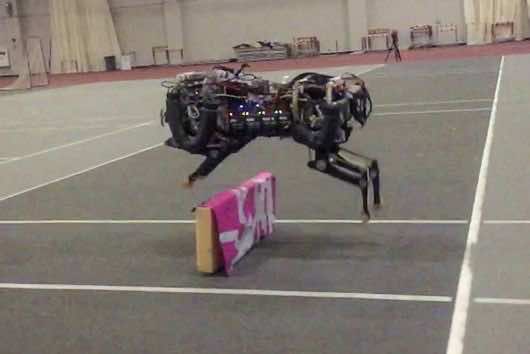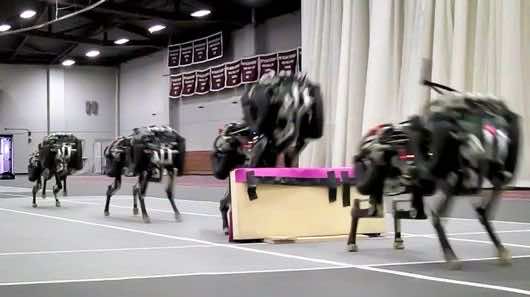After making their headless cheetahs able to roam autonomously around the lab, the MIT robots have now been given a considerable upgrade in the form of leaping over obstacles. A LIDAR system helps it achieve those moves. The cheetah had been jumping over obstacles up to the height of 33cm, but now it will be able to do much more than that!
Leaping robots might seem very simple in appearance, but it takes a lot of calculations and judgment to do such a move. The obstacle measuring system has to measure the exact height, length and width of the obstacle above the surface. Then it can do necessary calculations for the right pose to jump and bend while in mid-air. The reason behind the Cheetah robot project is that the world’s fastest runner and hunter hold great lessons for the future of robotics. There are various other organizations working on such cheetahs like Darpa and Boston Dynamics.
But only the cheetah from MIT can claim autonomous jumping ability over obstacles. With the help of onboard LIDAR system, the machine is now able to use Laser reflections to map the terrain. A special parallel algorithm dictates the following moves involved in the jumping process. The first part involves the measuring the size and distance of the obstacle. The second part of the programming sees the robot change direction and speed to have the best approach possible. This hard part only takes one-tenth of a second and dynamically changes the robot’s working shape. But that is not all. A third part of the algorithm involves working out the best working trajectory possible. The calculation of the precise force required to make the perfect leap is its part.
The cheetah was untethered on an indoor test track it performed admirably well, jumping over 45 cm obstacles with 90 percent success rate. It doesn’t even need to stop before attempting a jump. This dynamic achievement to handle balance and impact after leaping is a commendable effort indeed. But even now, the robot needs firm ground to walk on. It can’t successfully make a jump over soft terrain like grass. It limits its functionality outdoors, so it can’t be called a fully functional cheetah as of yet. The team is working hard to get it outdoors and so are the others. Which one will be the first to come up with the best all-terrain cheetah? We will have to wait and see!



